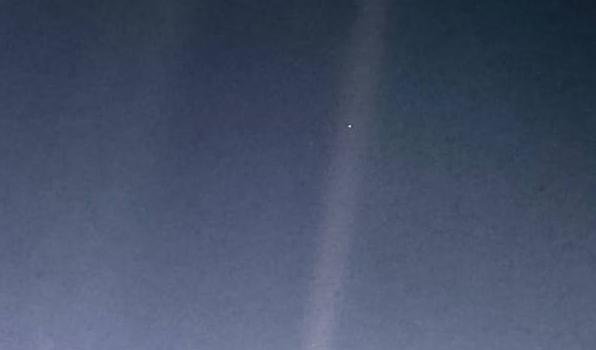Feb. 14 (UPI) -- An iconic NASA photograph of Earth, taken from the Voyager 1 spacecraft in 1990 and known as the "Pale Blue Dot," received an upgrade on its 30th anniversary.
The new version uses modern image-processing software and techniques but its artistic essence remains, dramatically depicting Earth as a single pixel in the vastness of space. Rays of sunlight cross the screen and intersect with Earth.















